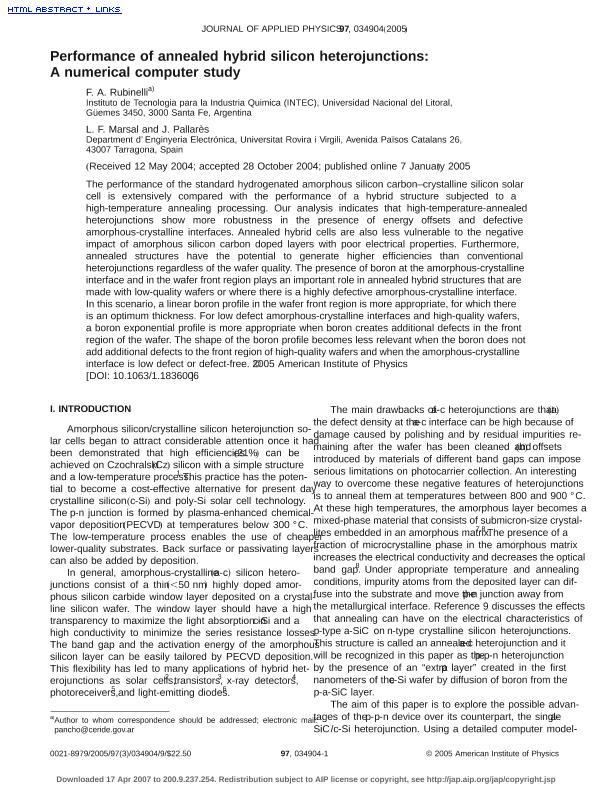Artículo
Performance of annealed hybride silicon heterojunctions: a numerical computer study
Fecha de publicación:
01/2005
Editorial:
American Institute of Physics
Revista:
Journal of Applied Physics
ISSN:
0021-8979
Idioma:
Inglés
Tipo de recurso:
Artículo publicado
Clasificación temática:
Resumen
The performance of the standard hydrogenated amorphous silicon carbon–crystalline silicon solar cell is extensively compared with the performance of a hybrid structure subjected to a high-temperature annealing processing. Our analysis indicates that high-temperature-annealed heterojunctions show more robustness in the presence of energy offsets and defective amorphous-crystalline interfaces. Annealed hybrid cells are also less vulnerable to the negative impact of amorphous silicon carbon doped layers with poor electrical properties. Furthermore, annealed structures have the potential to generate higher efficiencies than conventional heterojunctions regardless of the wafer quality. The presence of boron at the amorphous-crystalline interface and in the wafer front region plays an important role in annealed hybrid structures that are made with low-quality wafers or where there is a highly defective amorphous-crystalline interface. In this scenario, a linear boron profile in the wafer front region is more appropriate, for which there is an optimum thickness. For low defect amorphous-crystalline interfaces and high-quality wafers, a boron exponential profile is more appropriate when boron creates additional defects in the front region of the wafer. The shape of the boron profile becomes less relevant when the boron does not add additional defects to the front region of high-quality wafers and when the amorphous-crystalline interface is low defect or defect-free.
Palabras clave:
Hybride Solar Cells
,
Amorphous Silicon
,
Crystalline Silicon
,
Annealing
Archivos asociados
Licencia
Identificadores
Colecciones
Articulos(INTEC)
Articulos de INST.DE DES.TECNOL.PARA LA IND.QUIMICA (I)
Articulos de INST.DE DES.TECNOL.PARA LA IND.QUIMICA (I)
Citación
Rubinelli, Francisco Alberto; Marsal, L. F.; Pallarès, J.; Performance of annealed hybride silicon heterojunctions: a numerical computer study; American Institute of Physics; Journal of Applied Physics; 97; 3; 1-2005; 34904-34913
Compartir
Altmétricas




